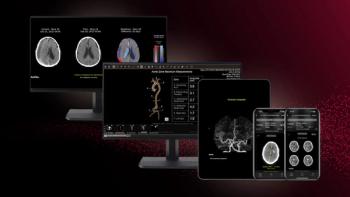
Report from SCMR: Society reconsiders its mission
Who will speak for cardiac CT? No one, when the setting is the annual business meeting of the Society for Cardiovascular Magnetic Resonance.
Who will speak for cardiac CT? No one, when the setting is the annual business meeting of the Society for Cardiovascular Magnetic Resonance.
SCMR leaders have debated for years whether the society's mission should include CT. The issue came to a head in what was characterized by SCMR president Dr. Warren Manning as a "passionate debate" at the annual board meeting in January, in response to the explosive growth of cardiac CT and the formation of the Society of Cardiovascular Computed Tomography. Within a few months, the SCCT had attracted 2000 members, compared with the 1400 members accumulated by the SCMR in its 10-year history.
Manning brought up the issue with many of those members at the annual SCMR meeting in Miami. Two microphones - one for pros and the other for cons - were set up, but only three members, all opposed to including CT, addressed the audience of about 700.
Dr. Nathaniel Reichek, director of research at St. Francis Hospital Heart Center in Roslyn, NY, expressed fear that interest in cardiac MR would diminish if the society attempted to serve both communities.
Dr. Leon Axel, director of cardiac imaging at the New York University School of Medicine, emphasized that the strength of the SCMR resides in its clear focus on MR and the diversity within that focus among basic scientists, physicians, engineers, radiologists, and cardiologists who have developed and applied the technology.
Dr. Dudley Pennell, director of cardiac MR at Royal Brompton Hospital in London, was concerned that cardiac MR research could lose momentum if it loses the SCMR as an incubator for technical innovation and its annual meeting as a showcase for its best work.
"This group is quite definitely recognized as the premier world society for cardiovascular MR. I don't see that continuing with a dual focus," he said.
The SCMR board plans to address the question of the society's mission in a mail-in referendum addressed to all members. Results will be announced later this year.
For more information from the Diagnostic Imaging archives:
Newsletter
Stay at the forefront of radiology with the Diagnostic Imaging newsletter, delivering the latest news, clinical insights, and imaging advancements for today’s radiologists.




























